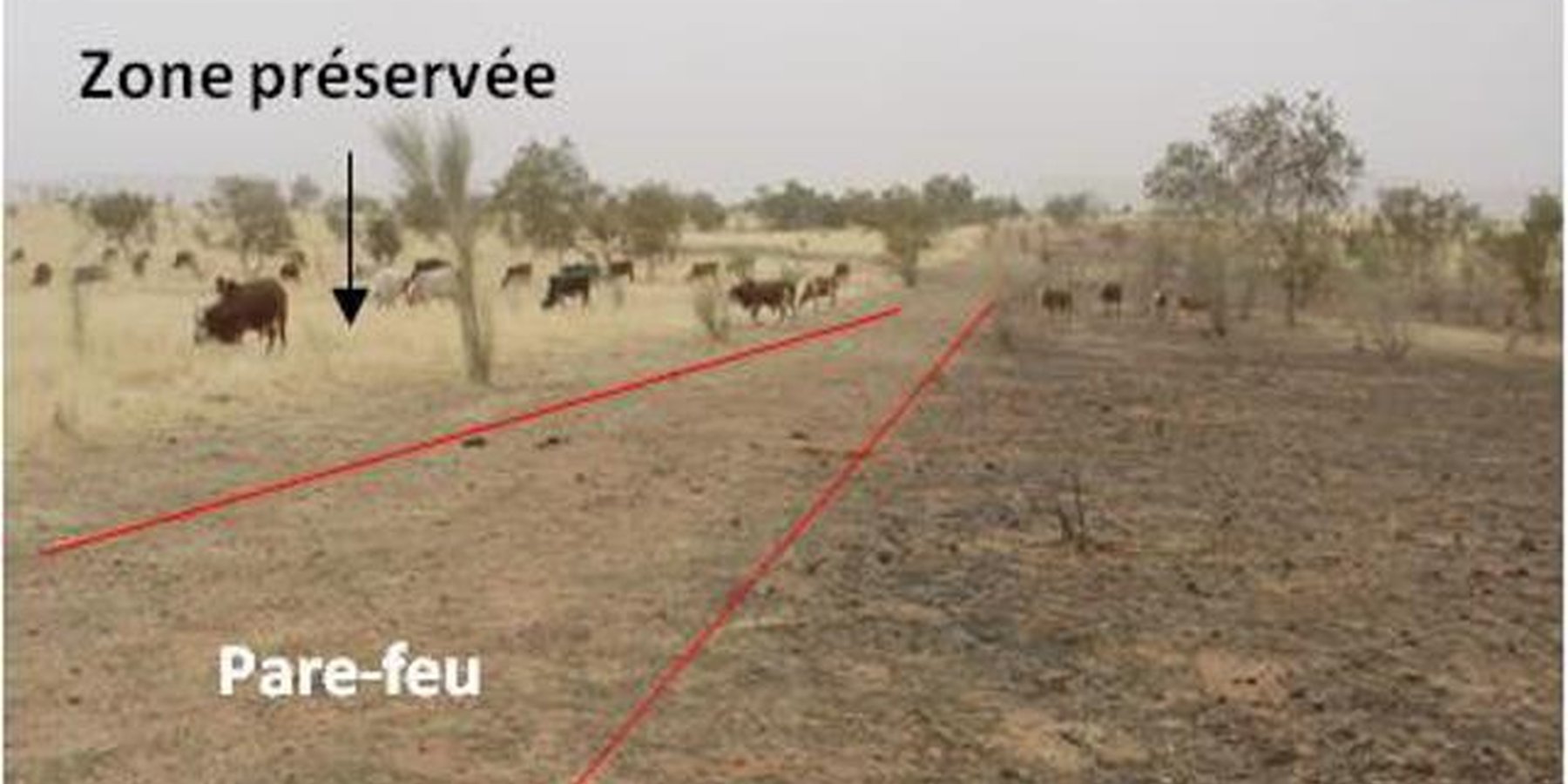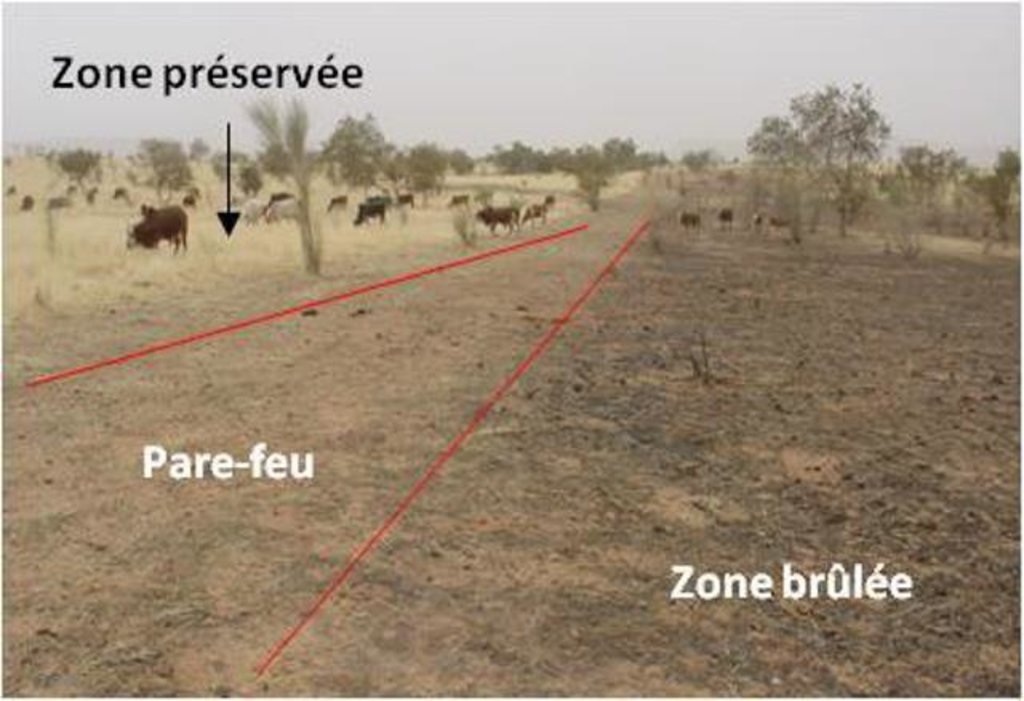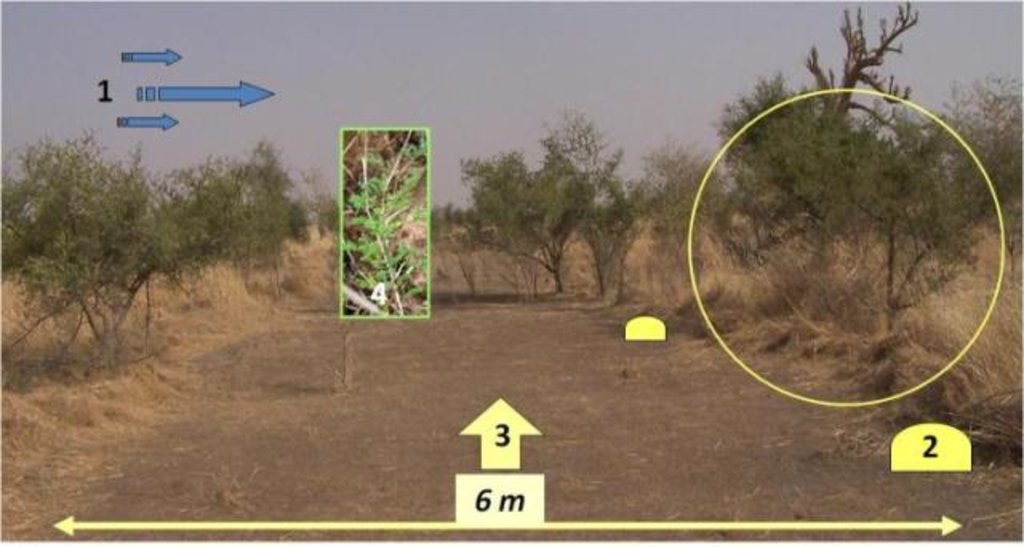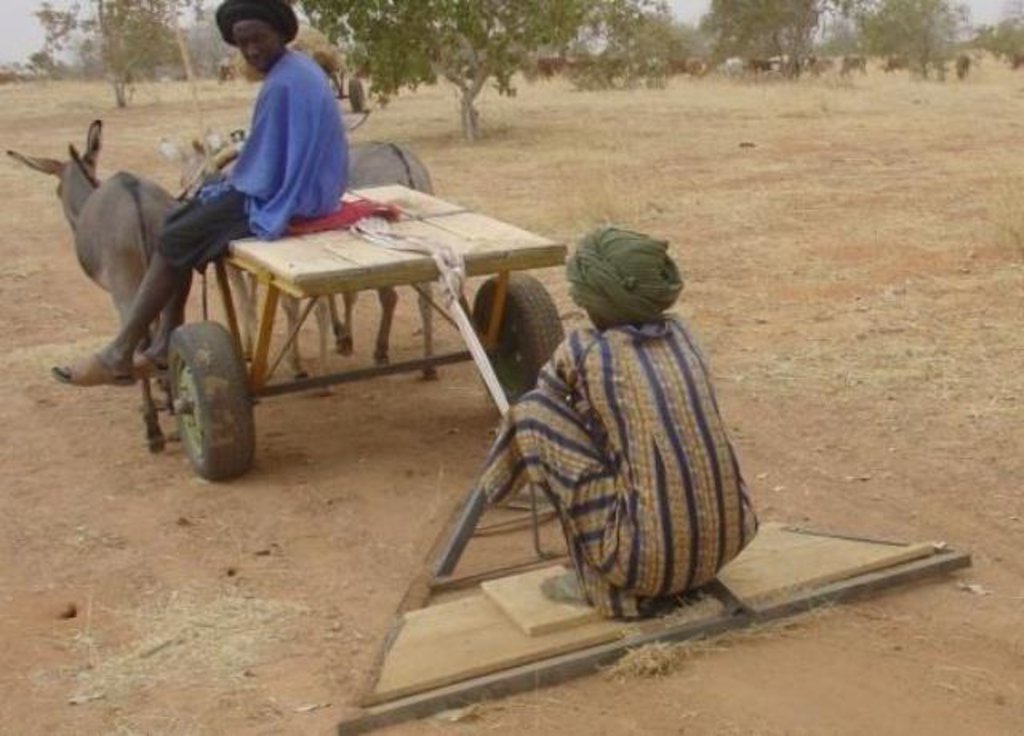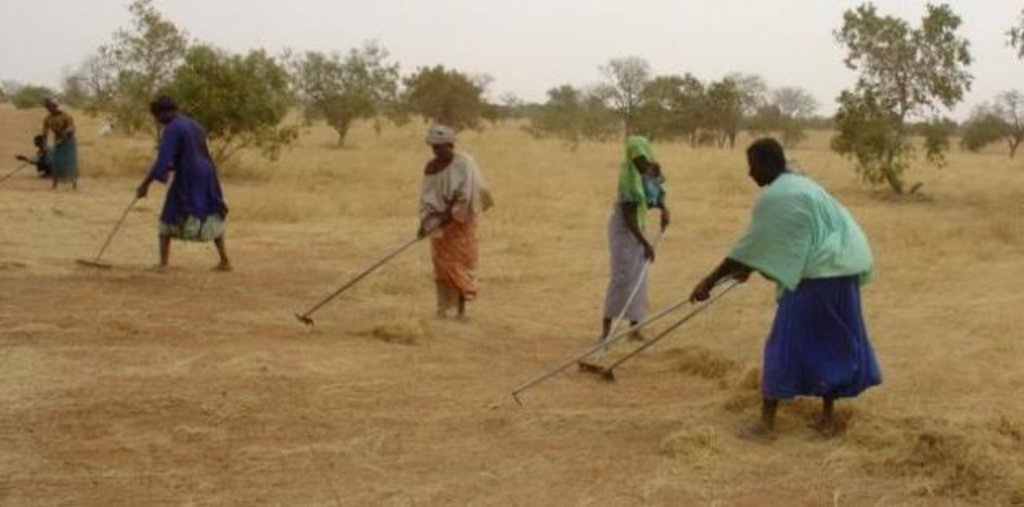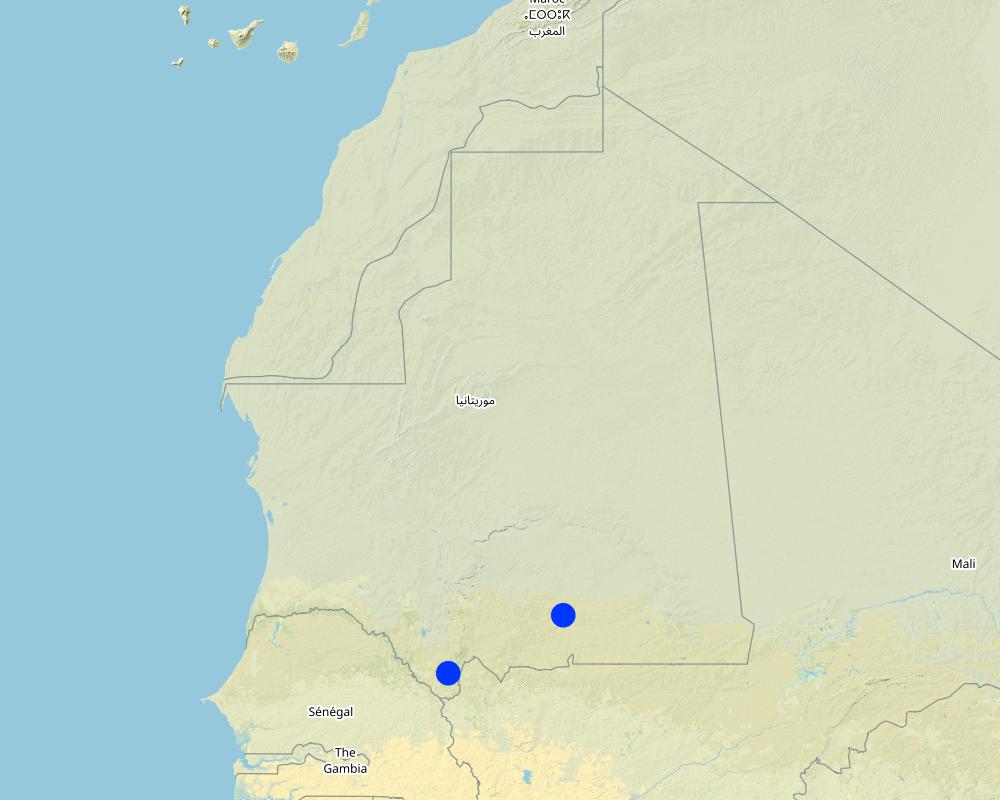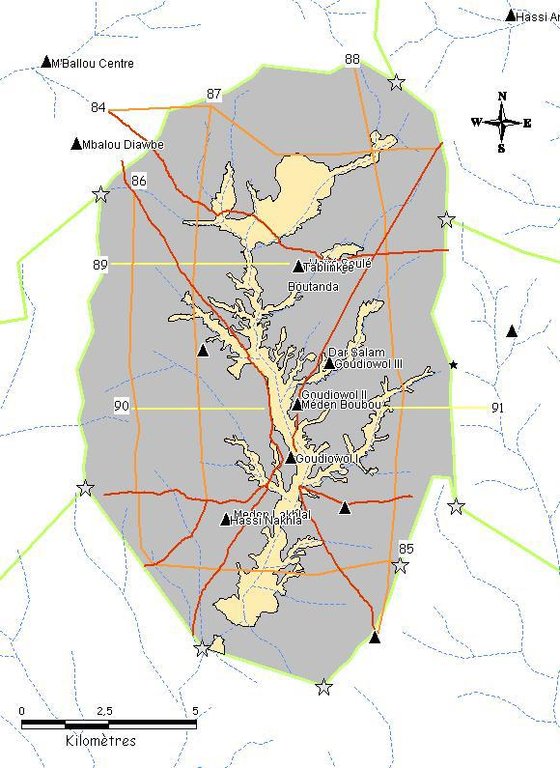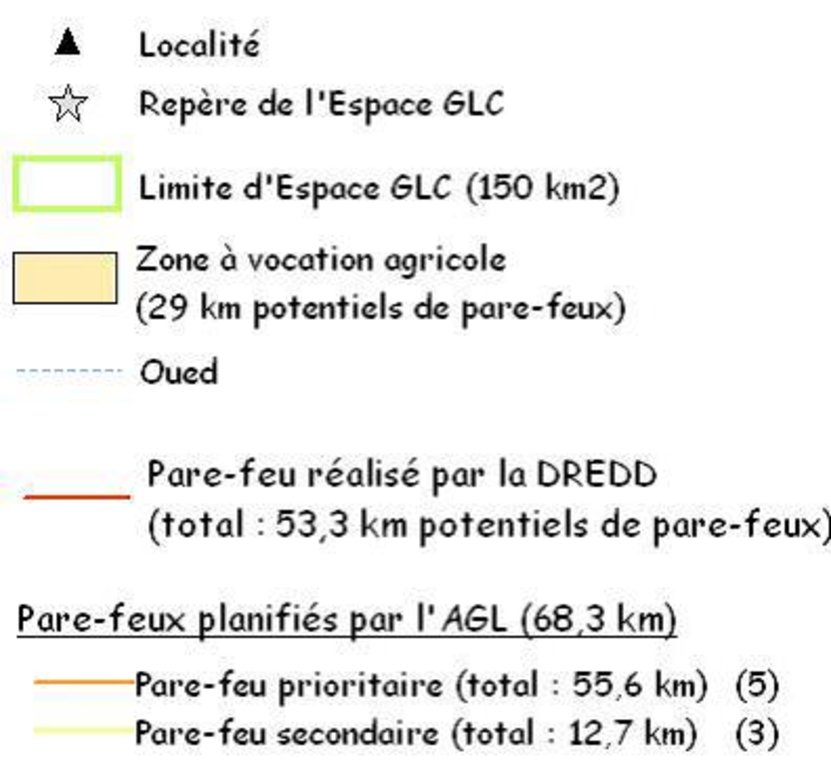Ouverture manuelle de pare-feux [Mauritania]
- Creation:
- Update:
- Compiler: Karl-Peter KIRSCH-JUNG
- Editor: –
- Reviewers: Alexandra Gavilano, Simone Verzandvoort, Rima Mekdaschi Studer, Joana Eichenberger
pare-feux manuels
technologies_2089 - Mauritania
View sections
Expand all Collapse all1. General information
1.2 Contact details of resource persons and institutions involved in the assessment and documentation of the Technology
SLM specialist:
DAH Kthour ould
UCAM
Mauritania
Name of project which facilitated the documentation/ evaluation of the Technology (if relevant)
Programme Gestion des Ressources Naturelles, Mauretanie (ProGRN)Name of project which facilitated the documentation/ evaluation of the Technology (if relevant)
Book project: Guidelines to Rangeland Management in Sub-Saharan Africa (Rangeland Management)Name of the institution(s) which facilitated the documentation/ evaluation of the Technology (if relevant)
Deutsche Gesellschaft für Internationale Zusammenarbeit (GIZ) GmbH (GIZ) - Germany1.3 Conditions regarding the use of data documented through WOCAT
The compiler and key resource person(s) accept the conditions regarding the use of data documented through WOCAT:
Yes
1.4 Declaration on sustainability of the described Technology
Is the Technology described here problematic with regard to land degradation, so that it cannot be declared a sustainable land management technology?
No
1.5 Reference to Questionnaire(s) on SLM Approaches (documented using WOCAT)
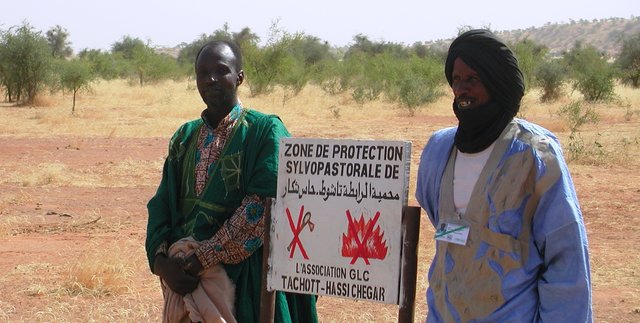
Gestion locale collective des ressources naturelles [Mauritania]
Un transfert de responsabilité de gestion des ressources sylvo-pastorales de l'Etat aux associations des usagers. L'élaboration concertée d'une convention locale définissant les règles de gestion, notamment les conditions d'accès, d'utilisation et de contrôle des ressources partagées dans l'espace retenue. La mise en œuvre de la convention par un système de …
- Compiler: Karl-Peter KIRSCH-JUNG
2. Description of the SLM Technology
2.1 Short description of the Technology
Definition of the Technology:
Chantiers annuels de l'aménagement de pare-feux manuels s'appuyant sur la mobilisation de la main d'oeuvre locale pour désherber les troncons retenus dans un schéma de pare-feux avec le « chariot pare‐feux » (herse) ou avec des branchages tirés par traction animale ou mécanique (voiture) et à l'aide de houes et des rateaux .
2.2 Detailed description of the Technology
Description:
Depuis 2004, le Programme de Gestion des ressources naturelles (ProGRN) met en place une activité de pare-feux manuels au Guidimakha et au Hodh el Gharbi. En 2010, le Ministère de
l’Environnement et du Développement Durable (MEDD) a décidé d’intégrer les pare-feux manuels dans sa campagne nationale et annuelle de pare-feux. Les objectifs de la mise en place des pare-feux manuels sont : la préservation d’un capital fourrager important pour l’économie nationale, la préservation des ressources naturelles, l’augmentation des revenus de populations pauvres en milieu rural. Pour éviter la réalisation anarchique de troncons dans les espaces des associations locales il est essentiel d'élaborer des schémas de pare-feux. Les schémas pare-feux sont des outils de planification qui sont élaborés pour chaque AGLC. Ils se matérialisent sous forme de cartes fixant l’orientation, la longueur et l’emplacement des futurs pare-feux à réaliser. Ces schémas prennent en compte les pare-feux naturels (zones rocheuses, oued) ou d’origine (pistes, zones agricoles, pare-feux mécaniques ouvert avec niveleuse, pare-feux manuels). Un pare-feu ne se réalise que là où il est nécessaire, c'est-à-dire là où la quantité de biomasse fourragère est importante et donc que le risque incendie est grand. Pour la réalisation d’un pare-feu manuel des normes ont été établis. Cela consiste á désherber un couloir de 6 à 9 métres de large et de plusieurs kilométres de longueur. Les dimensions ont définies selon la dnsité du couvert végétal, sa répartition dans l'espace et la hauteur de la strate herbacée. La technique d'ouverture manuelle des pare-feux s'appuie sur la main d'oeuvre locale pour désherber les troncons retenus dans un schéma de pare-feux avec le « chariot pare‐feux » (herse) ou avec des branchages tirés par traction animale ou mécanique (voiture) et à l'aide de houes et des rateaux. Il s'agit d'une activité à haute intensité de main d'oeuvre et à ce titre , elle favorise la création d'emplois et de revenus en milieu rural.
2.3 Photos of the Technology
2.5 Country/ region/ locations where the Technology has been applied and which are covered by this assessment
Country:
Mauritania
Region/ State/ Province:
Guidimakha et Hodh El Gharbi
Specify the spread of the Technology:
- applied at specific points/ concentrated on a small area
Comments:
Les 37 Associations de Gestion Locale, ayant reçu la délégation du mandat de gestion, couvrent des superficies assez variables de 800 km2 à 180 km2. Selon les superficies et les spécificités de l'espace, on peut retrouver entre 5 à 20 tronçons de pare-feux manuels d'une longueur de 8 km.
Map
×2.6 Date of implementation
Indicate year of implementation:
2004
2.7 Introduction of the Technology
Specify how the Technology was introduced:
- during experiments/ research
3. Classification of the SLM Technology
3.1 Main purpose(s) of the Technology
- improve production
- conserve ecosystem
- reduce risk of disasters
3.2 Current land use type(s) where the Technology is applied
Land use mixed within the same land unit:
Yes
Specify mixed land use (crops/ grazing/ trees):
- Silvo-pastoralism

Grazing land
Extensive grazing:
- Transhumant pastoralism

Forest/ woodlands
Comments:
Nombre de période de croissance par an: 1
Densité d'élevage/ chargement: Dans un système de transhumance, la charge de cheptel est en fonction de la pluviométrie annuelle et de la disponibilité des pâturages. En moyenne, la densité est de 2,9 hectares par UBT (tropical livestock unit).
3.4 Water supply
Water supply for the land on which the Technology is applied:
- rainfed
3.5 SLM group to which the Technology belongs
- pastoralism and grazing land management
- lutte contre les feux de brousse
3.6 SLM measures comprising the Technology

vegetative measures
- V3: Clearing of vegetation
3.7 Main types of land degradation addressed by the Technology

biological degradation
- Bf: detrimental effects of fires
3.8 Prevention, reduction, or restoration of land degradation
Specify the goal of the Technology with regard to land degradation:
- prevent land degradation
4. Technical specifications, implementation activities, inputs, and costs
4.1 Technical drawing of the Technology
Technical specifications (related to technical drawing):
Pour la réalisation d’un pare-feu manuel, les normes suivantes ont été établies (voir carte) :
1. Les tronçons sont toujours orientés perpendiculairement à la direction « habituelle » du vent.
2. La paille doit être déposée sur le côté du tronçon, opposé au sens du vent.
3. La paille du tronçon doit être enlevée sur une largeur minimale de 6 mètres (au maximum 10 m, la largeur augmentant avec la hauteur de la paille). Ce nettoyage se fait en deux temps:
un premier ratissage grossier de la biomasse avec le « chariot pare‐feux » (herse), ou avec des branchages tirés par traction animale ou mécanique (voiture) ;
Un deuxième ratissage plus soigné sera réalisé à l’aide du petit matériel (râteaux, houes).
4. Les jeunes pousses et autres essences ligneuses (arbres et arbustes) sont préservées en désherbant autour de leurs pieds.
5. Entre deux tronçons, une distance minimale de 2 à 3 km est à respecter.
Author:
ProGRN
Date:
05/01/2017
4.2 General information regarding the calculation of inputs and costs
Specify how costs and inputs were calculated:
- per Technology unit
Specify unit:
km
Specify dimensions of unit (if relevant):
1 km
Specify currency used for cost calculations:
- USD
If relevant, indicate exchange rate from USD to local currency (e.g. 1 USD = 79.9 Brazilian Real): 1 USD =:
366.0
Indicate average wage cost of hired labour per day:
5
4.4 Costs and inputs needed for establishment
| Specify input | Unit | Quantity | Costs per Unit | Total costs per input | % of costs borne by land users | |
|---|---|---|---|---|---|---|
| Labour | travaux | km | 1.0 | 55.0 | 55.0 | 20.0 |
| Equipment | matériel ( rateau, houe | km | 1.0 | 5.0 | 5.0 | |
| Total costs for establishment of the Technology | 60.0 | |||||
| Total costs for establishment of the Technology in USD | 0.16 | |||||
If land user bore less than 100% of costs, indicate who covered the remaining costs:
Budget de l'Etat ou communes rurales, bailleurs de fonds
Comments:
Coûts liés à la réalisation des pare-feux manuels: ressources humaines, formation du Bureau AGLC, chefs de chantiers: entre 1000 UM et 21500 UM par personne selon la distance par rapport au lieu de formation; travaux: main d’œuvre 150 00 UM/Km ouvert; transport du matériel: charretier 2000 UM/km; trajets pour suivi et évaluation: véhicule 100 UM/km; matériel: matériel de préparation (peinture, pinceaux, brosses): 700 UM/pot, 300 UM/brosse ou pinceau; outils: houes:2400 à 3 000 UM, fourches: 2000 UM, râteaux: 1500 à 2500 UM.
4.5 Maintenance/ recurrent activities
Comments:
L'ouverture des pare-feux se fait annuellement aux mêmes côuts.
4.6 Costs and inputs needed for maintenance/ recurrent activities (per year)
If you are unable to break down the costs in the table above, give an estimation of the total costs of maintaining the Technology:
60.0
Comments:
L'ouverture des pare-feux se fait annuellement aux mêmes côuts.
4.7 Most important factors affecting the costs
Describe the most determinate factors affecting the costs:
Le facteur le plus important est la main d'oeuvre (55 USD/km).
5. Natural and human environment
5.1 Climate
Annual rainfall
- < 250 mm
- 251-500 mm
- 501-750 mm
- 751-1,000 mm
- 1,001-1,500 mm
- 1,501-2,000 mm
- 2,001-3,000 mm
- 3,001-4,000 mm
- > 4,000 mm
Specify average annual rainfall (if known), in mm:
150.00
Indicate the name of the reference meteorological station considered:
Guidimakha; Hodh El Gharbi
Agro-climatic zone
- semi-arid
climat de type sahélien
5.2 Topography
Slopes on average:
- flat (0-2%)
- gentle (3-5%)
- moderate (6-10%)
- rolling (11-15%)
- hilly (16-30%)
- steep (31-60%)
- very steep (>60%)
Landforms:
- plateau/plains
- ridges
- mountain slopes
- hill slopes
- footslopes
- valley floors
Altitudinal zone:
- 0-100 m a.s.l.
- 101-500 m a.s.l.
- 501-1,000 m a.s.l.
- 1,001-1,500 m a.s.l.
- 1,501-2,000 m a.s.l.
- 2,001-2,500 m a.s.l.
- 2,501-3,000 m a.s.l.
- 3,001-4,000 m a.s.l.
- > 4,000 m a.s.l.
Indicate if the Technology is specifically applied in:
- not relevant
5.3 Soils
Soil depth on average:
- very shallow (0-20 cm)
- shallow (21-50 cm)
- moderately deep (51-80 cm)
- deep (81-120 cm)
- very deep (> 120 cm)
Soil texture (topsoil):
- coarse/ light (sandy)
Soil texture (> 20 cm below surface):
- coarse/ light (sandy)
Topsoil organic matter:
- low (<1%)
5.4 Water availability and quality
Ground water table:
> 50 m
Availability of surface water:
poor/ none
Water quality (untreated):
good drinking water
Is water salinity a problem?
No
Is flooding of the area occurring?
No
5.5 Biodiversity
Species diversity:
- low
Habitat diversity:
- low
5.6 Characteristics of land users applying the Technology
Sedentary or nomadic:
- Sedentary
- Semi-nomadic
Market orientation of production system:
- mixed (subsistence/ commercial)
Off-farm income:
- less than 10% of all income
Relative level of wealth:
- poor
Individuals or groups:
- individual/ household
Level of mechanization:
- animal traction
Gender:
- women
- men
Age of land users:
- middle-aged
5.7 Average area of land used by land users applying the Technology
- < 0.5 ha
- 0.5-1 ha
- 1-2 ha
- 2-5 ha
- 5-15 ha
- 15-50 ha
- 50-100 ha
- 100-500 ha
- 500-1,000 ha
- 1,000-10,000 ha
- > 10,000 ha
Is this considered small-, medium- or large-scale (referring to local context)?
- large-scale
Comments:
180 à 800 km2
5.8 Land ownership, land use rights, and water use rights
Land ownership:
- state
Land use rights:
- communal (organized)
Water use rights:
- communal (organized)
5.9 Access to services and infrastructure
health:
- poor
- moderate
- good
education:
- poor
- moderate
- good
technical assistance:
- poor
- moderate
- good
employment (e.g. off-farm):
- poor
- moderate
- good
markets:
- poor
- moderate
- good
energy:
- poor
- moderate
- good
roads and transport:
- poor
- moderate
- good
drinking water and sanitation:
- poor
- moderate
- good
financial services:
- poor
- moderate
- good
6. Impacts and concluding statements
6.1 On-site impacts the Technology has shown
Socio-economic impacts
Production
fodder production
fodder quality
wood production
non-wood forest production
Socio-cultural impacts
community institutions
Comments/ specify:
Renforcement des instititutions locales
Ecological impacts
Climate and disaster risk reduction
fire risk
6.3 Exposure and sensitivity of the Technology to gradual climate change and climate-related extremes/ disasters (as perceived by land users)
Climate-related extremes (disasters)
Meteorological disasters
| How does the Technology cope with it? | |
|---|---|
| local sandstorm/ duststorm | well |
Climatological disasters
| How does the Technology cope with it? | |
|---|---|
| land fire | very well |
6.4 Cost-benefit analysis
How do the benefits compare with the establishment costs (from land users’ perspective)?
Short-term returns:
positive
Long-term returns:
positive
How do the benefits compare with the maintenance/ recurrent costs (from land users' perspective)?
Short-term returns:
positive
Long-term returns:
positive
6.5 Adoption of the Technology
- > 50%
If available, quantify (no. of households and/ or area covered):
37 AGLC ont réalisé, nt 1 500km par saison
Of all those who have adopted the Technology, how many did so spontaneously, i.e. without receiving any material incentives/ payments?
- 0-10%
6.6 Adaptation
Has the Technology been modified recently to adapt to changing conditions?
No
6.7 Strengths/ advantages/ opportunities of the Technology
| Strengths/ advantages/ opportunities in the land user’s view |
|---|
|
Revenus pour les ouvriers dont la grande majoritéest issue des classes sociales les plus pauvres : 80 US$ en moyenne par travailleur par campagne (chiffre obtenu pour la campagne 2010-2011 du Guidimakha et du Hodh el Gharbi) |
| Contribution à l’alimentation (et donc la survie) des troupeaux, base existentielle de nombreux ménages et première activité sur le plan national. |
| Strengths/ advantages/ opportunities in the compiler’s or other key resource person’s view |
|---|
| Préservation des ligneux (adultes et jeunes pousses) et du fourrage et donc de la biodiversité. |
| Coût faible de réalisation (19 000 UM/km ouvert) |
| 700 000 ha protégés en 2011 au Guidimakha et au Hodh el Gharbi, représentant une valeur économique de 240 800 UBT (unités bovins tropicaux). |
| Travail intercommunautaire renforçant la solidarité intra et intervillageoise. |
| Implication des femmes dans la réalisation des ouvrages |
|
Diminution des surfaces brûlées : selon le service compétent, la régression en termes des superficies brûlées est d’environ -62% au Hodh el Gharbi et de - 35% au Guidimakha. |
6.8 Weaknesses/ disadvantages/ risks of the Technology and ways of overcoming them
| Weaknesses/ disadvantages/ risks in the land user’s view | How can they be overcome? |
|---|---|
| Les travaux doivent démarrer juste après les récoltes agricoles. | Bien planifier les différentes activités. |
| Weaknesses/ disadvantages/ risks in the compiler’s or other key resource person’s view | How can they be overcome? |
|---|---|
|
Le défi demeure dans le maintien du budget alloué pour la réalisation des pare-feux manuels, dans la bonne mobilisation et formation des populations ainsi que dans le suivi (assez lourd) des réalisations. |
7. References and links
7.1 Methods/ sources of information
- interviews with SLM specialists/ experts
15 personnes interogées
- compilation from reports and other existing documentation
When were the data compiled (in the field)?
07/03/2017
7.2 References to available publications
Title, author, year, ISBN:
Ouverture manuelle de pare-feux, ProGRN, 2011
Available from where? Costs?
https://wocatpedia.net/wiki/Ouverture_manuelle_de_pare-feux
Links and modules
Expand all Collapse allLinks

Gestion locale collective des ressources naturelles [Mauritania]
Un transfert de responsabilité de gestion des ressources sylvo-pastorales de l'Etat aux associations des usagers. L'élaboration concertée d'une convention locale définissant les règles de gestion, notamment les conditions d'accès, d'utilisation et de contrôle des ressources partagées dans l'espace retenue. La mise en œuvre de la convention par un système de …
- Compiler: Karl-Peter KIRSCH-JUNG
Modules
No modules


